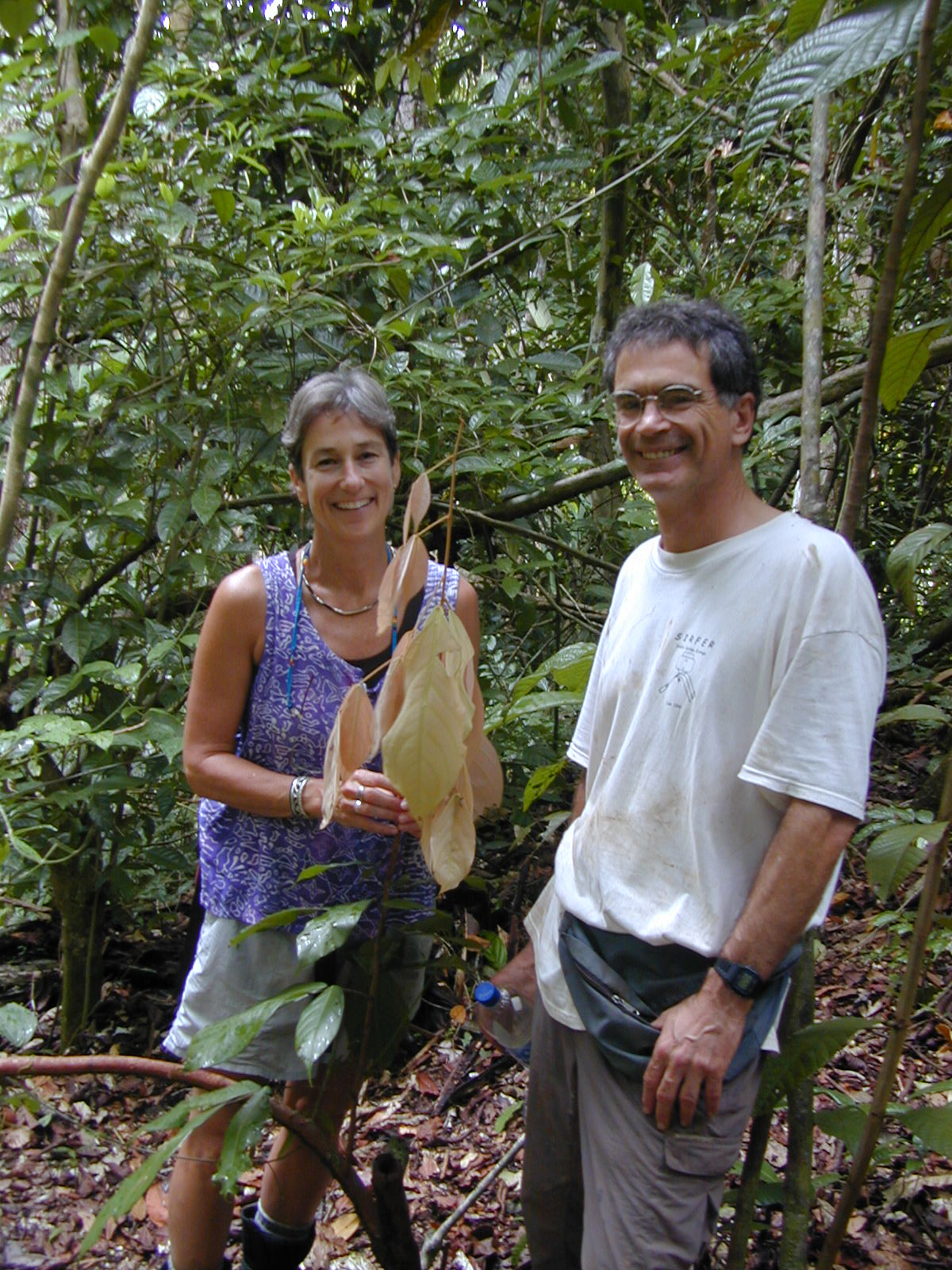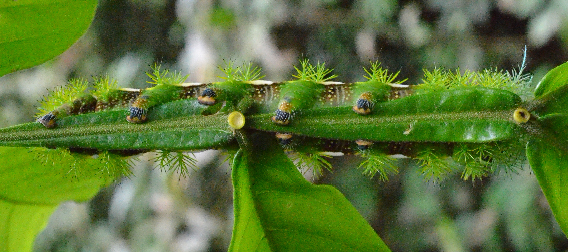Welcome to the research group of
Thomas Kursar and Phyllis Coley

Our research focuses on the ecology and evolution of tropical rainforest plants and their interaction with herbivores.
Using a phylogenetic context, we characterize plant defenses, especially secondary metabolites and link this with herbivore host choice.
We hope to shed light on factors driving high local plant diversity in the tropics, evolutionary impacts of plants and herbivores on each other, and how these interactions may promote speciation.
See our most recent study published in Science, titled, Herbivores as drivers of negative density dependence in tropical forest saplings., authored by Dale L. Forrister, Maria-Jose Endara, Gordon C. Younkin, Phyllis D. Coley and Thomas A. Kursar. See full article text here.
See also: Tiputini Herbivore Video Highlights
Utah Public Radio, UnDisciplined: The Tropical Ecologist And the Microbiologist

The caterpillar of a giant silkworm, Automeris (Saturniidae), is feeding on the underside of young leaves of a tree genus Inga (Fabaceae). This photo taken at the Tiputini field station in the Ecuadorian Amazon. Inga is one of the most diverse (>300 species) and abundant tree genera in Neotropical rainforests. The yellow "cups" on the leaves are extrafloral nectaries. They provide sugar to predacious ants in exchange for protection against herbivores. Additional protection is provided through toxic phenolics and amines. These toxins compose 30-50% of the dry weight of young leaves. |
